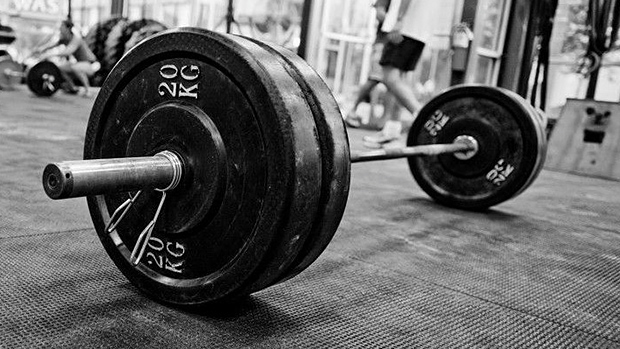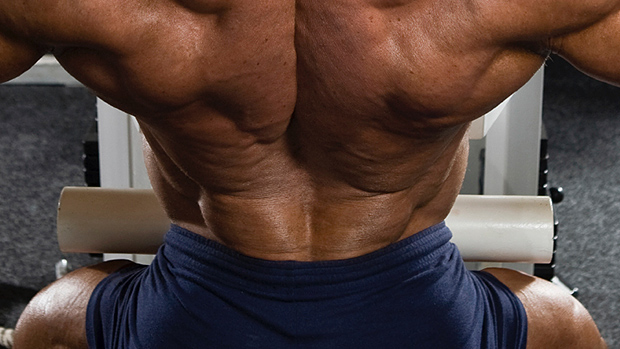It's time for some nutritional tips for those who roll their eyes at just the thought of counting, measuring, or recording anything. Now, you can eat to gain size or lose fat without carrying a diet book with you all damn day!
After you've had your nutritional fill, I'll give you a new exercise to blast your upper back, plus a few tips on how to select back movements for growth where you want it, when you want it.
So, if you think you can handle it, let's go!
Clock Your Way Lean – (And Other Tips for Those Who Hate Plans)
The body is a formidable piece of engineering. Its capacity to adapt, survive, and strive when faced with the most extreme conditions has made us the dominating species that we are.
Make no mistake about it: We're built, first and foremost, for survival. Everything that goes on in the body happens with the prime objective of keeping us alive and remaining healthy enough for sexual activity (with your doctor's permission, of course) in order to perpetuate the human race.
Take sex, for example. Why are we randy bastards that get aroused at the slightest sight of a well-designed vixen? That hair-trigger horniness is the best way to make sure that we'll continue churning out babies.
Hunger is no different. Hunger – real, physical hunger, not the psychological variety – is, in fact, a survival mechanism that makes us look for, and eat, nutritious food when the body needs energy and nutrients.
At least, it used to be that way.
Now, with the overabundance of pleasure foods and the social nature of eating, we find ourselves wanting to eat more for entertainment or emotional purposes.
Normally, the body shouldn't need a precise diet written on a piece of paper. The body knows what it needs and how much of it. And it knows how to ask for it. Sadly, we've lost the capacity to interpret its message. For example, our body might ask us to provide it with more fuel, and we'll interpret that as, "Must. Have. Ice cream."
To optimize body composition, we should eat when our body asks for nutrients. (The exception to this is the period immediately before, during, and after training, which taps into "The 3rd Law of Muscle"). However, we should do so within the framework of a predetermined list of foods. This means that on some days you might only eat three times, while on others you might dirty eight plates!
Obviously, it isn't as simple as that (it never is). Here are a few rules to make this approach work for you:
- Eat only when you're physically hungry. Learn to distinguish between emotional pangs and the actual need to eat. To get a handle on your hunger, use the stopwatch trick. When you feel hungry, start a 15-minute countdown, and use that time to reflect on whether you need to eat or simply want to because of stress, boredom, or gluttony. Giving yourself a set time frame will prevent impulsive eating and will allow you to make better choices.
- If you're training hard in an effort to add muscle and you aren't suffering from physical hunger more than three times per day, you're doing something wrong training wise. The need to adapt to training requires nutrients and energy. The training itself also requires a lot of energy. The more positive damage that's done during your workout, the more nutrients and calories your body will need to recover.
If you need more nutrients, your body will naturally send you the signal to eat more (you know, that grumbling below that pulls you to the fridge like a magnet). So, if your appetite is missing, it's because you're either lifting like a pansy or you have digestive problems. The bottom line is that if you aren't hungry when trying to build mass, ask yourself if you're really busting your ass hard enough to make your body crave what you need to grow.
- If you're trying to lose fat, you'll obviously be hungrier, but you shouldn't be constantly ravenous, feeling deprived, or having deviant fantasies about Little Debbie. If you get a lot of cravings when dieting, it can be because:
- You aren't providing your body with all of the nutrients it needs (you're likely deficient in some vitamins and minerals).
- Your energetic nutrient intake (fats and/or carbs) is too low to fill your minimum daily needs. A common example is people who follow a low-carb diet while also greatly limiting their fat intake. Yes, we want to create an energy deficit, but we still must give our bodies enough fuel to function normally.
- You have a digestion problem, and thus, can't absorb all of the nutrients you ingest. If you don't absorb it, your body can't use it.
- You're dehydrated. A lot of people confuse thirst with hunger, so when you feel hungry, try downing eight to ten ounces of water, wait 15 minutes (again, use your trusty stopwatch) and see if you're still truly hungry or were just thirsty.
So, how do you make this work?
Start with your main objective: gaining muscle or losing fat.
Establish your body type: endomorph (gains fat easily), mesomorph (naturally muscular), or ectomorph (naturally thin and narrow).
Calculate your minimal daily protein requirement (the only thing you're actually counting), and then select your nutrient dominance.
If you're an endomorph, you should use a protein and fat approach.
This means that if you're dieting down you should limit your carb intake to green veggies. If you're in a lean mass phase, you should consume only green veggies, too, except for post-workout where you can have 30 to 50 grams of another type of carb.
Finally, if you're in a maximal mass gaining phase, you should consume the bulk of your food as protein and fat, but you can include some carbs at each meal, preferably in the form of fruits, veggies, and high-fiber foods.
On the other hand, an ectomorph will respond better to a protein and carb diet. In his case, protein and carb foods should be the foundation of his diet, with healthy fats still finding their way to the plate (Testosterone levels go down when you consume less than approximately 0.4 grams of fat per pound of bodyweight).
So, if you're in a fat loss phase, protein foods, veggies, and fruits (in that order) should be the main players in your diet.
If you're in a lean gaining phase, you can also throw in some starches like yams, potatoes, and rice, but keep them stashed away for the two-hour period after a workout.
The same dietary approach should be used when trying to gain a maximum amount of size, but I'd add nuts into the mix, as they're extremely dense in energy.
To recap:
- Make sure that you have a high protein intake (1.25 to 1.75 grams per pound) divided into five to seven daily servings.
- Make the proper food choices for your body type and goal.
- Eat when you're physically hungry, making sure that your food selection includes only the food choices that fit your type.
- If you aren't hungry and are training to gain size, you're either a) not training hard enough to stimulate your hunger (in that case, you shouldn't be progressing) or b) are eating enough to meet your nutrient needs (in that case, you'll be progressing).
- When dieting down, make sure that the hunger you feel is really physical hunger and not just an emotional craving.
- If you're dieting down, it's especially important to eat for the proper time frame. Once you start eating, it takes the body around 20 to 25 minutes to send out the "I'm full" signal. So, if you eat too fast, your chances of overeating because you aren't satisfied drastically increase. Once again, I recommend using your stopwatch. Program a 25-minute countdown and make sure that you haven't finished eating before the 25 minutes have run down.
The Double Down Pull-Down
The pulling angle of a pull-down or rowing motion significantly impacts the portion of the back that receives the most stimulation.
As a rule of thumb, the more the pulling line is parallel to the torso, the greater the relative involvement of the width muscles (latissimus dorsi and teres major).
As the line of pull becomes more perpendicular to the torso, the recruitment of the thickness muscles (rhomboids, mid traps, and lower traps) increases, and the lats and teres major take on a reduced role.
A movement with a big payout and the ability to stimulate all of your upper back is called the "double down pull-down." It basically combines a parallel pull and a perpendicular pull into one menacing exercise.


The best way to perform this exercise is on a lever machine. This is because the handles start far enough from your torso that you're able to lean forward significantly in the starting position. This forward lean will ensure that the lats are maximally stretched and that the pulling line remains as parallel to your torso as possible.
From that starting position, pull the weight down while keeping the same torso angle. Squeeze the contracted position for one to two seconds, and then lean back while keeping the handles in the same position. From there, pull the weight toward you again and hold the contraction for another one to two seconds.
You can also perform this exercise on a regular lat pull-down machine, but you'll need to perform the drill kneeling so that you can get far enough away from the pulley to give yourself room to lean forward. The downside to this variation is that as you get stronger, you tend to lose your balance.


Time's Up!
That's my stopwatch yelling in the background, so that means this week's session has come to an end.
While I go ransack the kitchen for some food, you head off to the gym for some double trouble and meet me back here for more next Monday.




